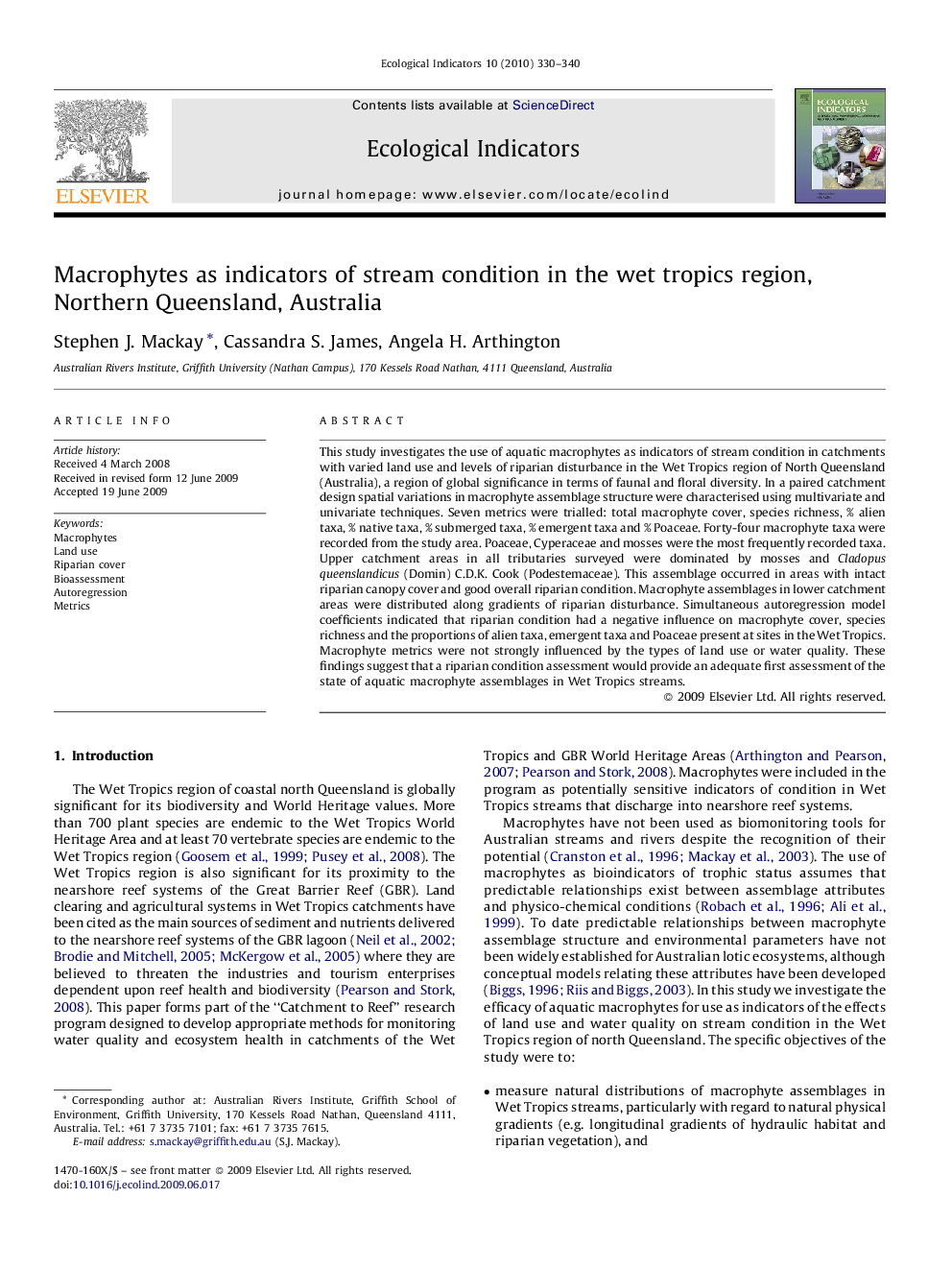| Article ID | Journal | Published Year | Pages | File Type |
|---|---|---|---|---|
| 4374289 | Ecological Indicators | 2010 | 11 Pages |
This study investigates the use of aquatic macrophytes as indicators of stream condition in catchments with varied land use and levels of riparian disturbance in the Wet Tropics region of North Queensland (Australia), a region of global significance in terms of faunal and floral diversity. In a paired catchment design spatial variations in macrophyte assemblage structure were characterised using multivariate and univariate techniques. Seven metrics were trialled: total macrophyte cover, species richness, % alien taxa, % native taxa, % submerged taxa, % emergent taxa and % Poaceae. Forty-four macrophyte taxa were recorded from the study area. Poaceae, Cyperaceae and mosses were the most frequently recorded taxa. Upper catchment areas in all tributaries surveyed were dominated by mosses and Cladopus queenslandicus (Domin) C.D.K. Cook (Podestemaceae). This assemblage occurred in areas with intact riparian canopy cover and good overall riparian condition. Macrophyte assemblages in lower catchment areas were distributed along gradients of riparian disturbance. Simultaneous autoregression model coefficients indicated that riparian condition had a negative influence on macrophyte cover, species richness and the proportions of alien taxa, emergent taxa and Poaceae present at sites in the Wet Tropics. Macrophyte metrics were not strongly influenced by the types of land use or water quality. These findings suggest that a riparian condition assessment would provide an adequate first assessment of the state of aquatic macrophyte assemblages in Wet Tropics streams.
